Film Name:玩具總動員4 / Toy Story 4
I still vividly remember nine years ago, sitting in the theater watching Toy Story 3 and crying my eyes out. As a story about “growing up and saying goodbye,” it was flawless—the perfect ending to the Toy Story saga.
While there’s every reason to anticipate Toy Story 4, it’s only natural to feel a bit skeptical before watching: After the series concluded so perfectly, what new story could this installment possibly tell?

Fortunately, Pixar did not disappoint this time. Once again, they delivered a response that far exceeded expectations.
“Toy Story 4” preserves the essence of the first three films while boldly breaking new ground. It expands into new genres and possibilities, telling a fresh story about ‘choice’ and “freedom.”
[Friendly reminder: Spoilers ahead.]
Pixar animations possess numerous captivating qualities—cutting-edge 3D technology, exceptional screenplays, and one element that cannot be overlooked: their novel creativity.
There’s no need to revisit every classic Pixar film; simply examining the evolution of the Toy Story franchise makes it clear: from anthropomorphizing children’s toys and adopting a human perspective, to making each character more vivid, and ultimately establishing a tightly knit yet (relatively) independent societal system of their own—the creative well has never run dry.
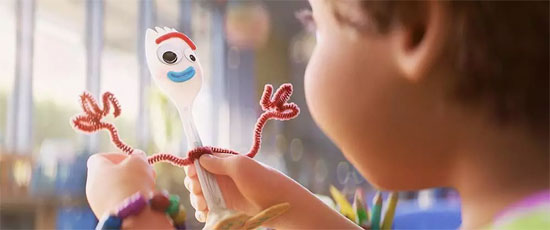
And “Toy Story 4” has once again expanded our understanding of this little world. The most prominent example in the early stages is Bonnie’s homemade “toy,” Forky.
Logically, a small object cobbled together from scraps by a young child shouldn’t qualify as a toy (as proven by Woody’s initial reaction). Yet, Forky suddenly possesses his own personality… Only, when Forky first “awakens,” he constantly refers to himself as “trash.” This identity crisis resonates perfectly with the inherent sense of purpose felt by other characters born as toys.
Objectively speaking, Bonnie created Forky as her playmate, effectively granting him the meaning of a “toy.” This doesn’t contradict the series’ core principles—it’s a thought-provoking reinvention that stays true to the spirit of Toy Story while driving the plot forward. That’s what makes it a brilliant idea.
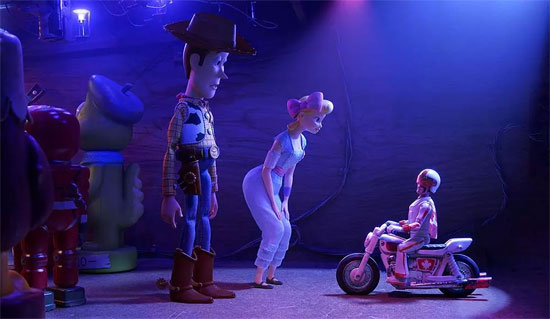
Moreover, Toy Story 4 makes a giant leap in expanding the franchise’s universe, most notably with the mid-story appearance of the antique shop “Toy Club” (run by Pixar’s Tin Soldiers, by the way).
From the toys in Andy’s room in the first film, to the collectible toys in the second, to the kindergarten toys in the third, this world’s stage has always been expanding outward. Yet none of these expansions have ever created a more comprehensive, detailed, and authentic vision than “Toy Story 4.”
Previous films adhered to an unspoken rule: “A toy’s purpose is to play with children.” Yet this installment not only introduces the groundbreaking concept of “stray toys” but also meticulously details the diverse existential states of different toys, greatly enriching the viewing experience.
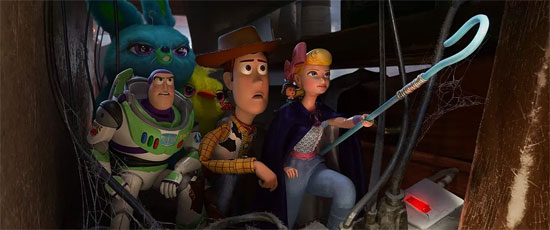
Building on this foundation, Toy Story 4’s inventive scene transitions and thrilling adventures feel fresher, more engaging, and more vibrant than ever: Woody’s persistent persuasion of the “non-mainstream toy” Forky, the harrowing rescue in the antique shop, the carnival skunk car’s cunning “sharing the fun” scheme—each design element offers moments that will either catch you off guard or elicit a knowing smile.
Having briefly touched on “creativity,” I won’t dwell on the ‘technical’ aspects (don’t ask—it’s simply outstanding). Next, I want to focus on the “story” of Toy Story 4.
As I’d previously feared, the first three Toy Story films were already perfectly complete, and protagonist Woody had fully grown. Rebooting a new story wouldn’t be easy… Yet I never imagined that “maturity” itself could generate fresh conflicts.
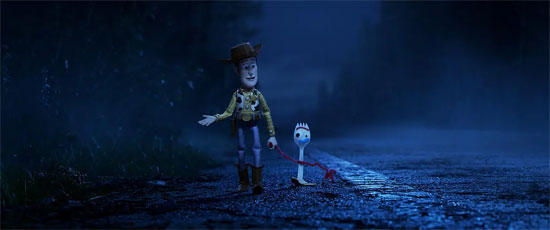
When Andy handed over his once-beloved toys to Bonnie, we all thought “happily ever after” was the ending. But it wasn’t until Toy Story 4 that we realized Bonnie is different from Andy—she’s an introverted, sensitive, and gentle girl.
Thus, Woody—long accustomed to being center stage—gradually fell out of favor. The doll who’d spent more time with Bonnie was better suited to take charge, and this sense of displacement became highly malleable “raw material.”
Yet the mature, dependable, and responsible Woody didn’t retreat into passivity. He continued to protect his owner with all his might, trekking across mountains and rivers to retrieve Forky—a creature never meant to be a toy—and imparting heartfelt lessons about the identity of toys and the meaning of companionship.
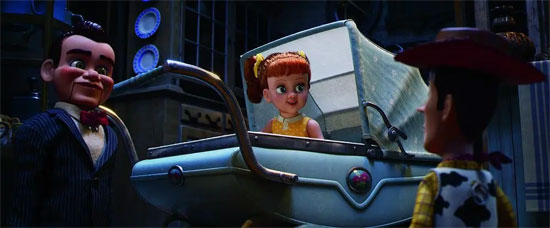
One could say Woody both maintains his familiar cowboy persona—passionate, brave, and tenacious—while adding the distinct traits of a seasoned elder. No matter what, he never forgets his duty and mission: to stand guard while also mentoring and passing on his wisdom.
Though the story of Woody and Forky in this phase is entertaining, it remains confined to the realm of “household toys.” What follows, however, truly broadens our horizons.
“Toy Story 4” introduces a host of fresh characters, each toy embodying a distinct emotional struggle, philosophy, or pursuit: Gabby Doll, for instance, has never formed a bond with a child. She attributes this to a “congenital defect”—a malfunctioning voice box—believing that fixing this flaw will alter her fate, justifying any means to achieve it;
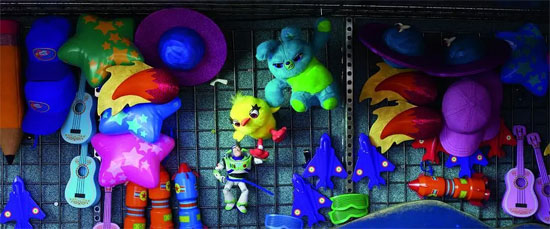
Ducky Ducks and Bunny, the “plushies,” suffer from bad luck—never won by a child since hitting the shelves. Their twisted psyche leads them to ostracize the newcomer Buzz Lightyear, who threatens their “job.” Duke McHale, just as he begins his “toy revolution,” gets abandoned. Even after becoming the coolest kid in the club, he still can’t overcome his “I’m not good enough” mental block…
All toys, ownerless or not, will eventually face the fate of losing their playtime with children and encountering a crisis of self-identity. Thus, even though some characters in Toy Story 4 share similarities with their past roles, their portrayal remains fresh.
Precisely for this reason, the most eye-catching character—and the true heart of the film—is undoubtedly the shepherdess, who pursues a “brand-new life.”
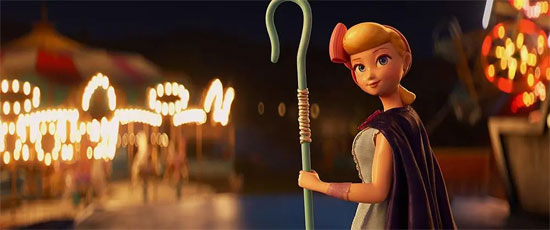
The concept of “old characters, new personas” is inherently clever. The Shepherdess not only introduced the idea of wandering toys but also embodied her own seven-year-long life philosophy: unlike other abandoned or ownerless toys who speak one thing but feel another, she genuinely embraced a life “devoid of toy purpose” while still yearning to play with children. Her involvement in the rescue mission wasn’t driven by seeking a new owner, but by extending a hand out of loyalty to Woody.
Incidentally, when it comes to “embracing contemporary trends with independent female empowerment,” Toy Story 4 stands head and shoulders above many other works. Without delving into distant examples, just consider this month’s X-Men: Dark Phoenix and Men in Black: International —arguing over puns like “X-MEN” vs. “X-WOMEN” or “Men in Black” vs. “Women in Black” is pretty lame. The Shepherdess doesn’t get bogged down in semantics; she proves her point through action, which speaks louder than words…
What truly moved me about the film wasn’t just characters like the Shepherdess seeking new “meaning in life,” but the fact that every toy possesses the right and freedom to make their own choices.
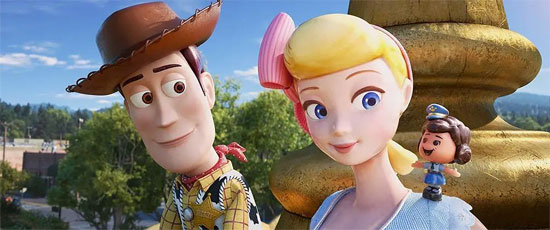
While Bo Peep and Dimple’s carefree spirit is admirable, the destinies of other toys moved me just as deeply: Gabby Doll mustered courage after heartbreak to join a lonely child, Duck and Bunny turned to helping other “disgruntled” toys, while Duke McHill simply needed a chance to reconcile with his inner demons…
When Woody faces the dilemma at the end—whether to “return to Bonnie” or “roam the world with Bo Peep”—I felt a sense of acceptance: “whichever choice he makes, I can embrace it wholeheartedly.” This feeling itself proves the film’s masterful atmosphere and thematic depth—as long as it’s Woody’s (and the toys’) own choice, there will be no regrets.
The iconic farewell line between Woody and Buzz Lightyear—”Buzz Lightyear, here’s to infinity and beyond!”—most powerfully encapsulates the spirit of Toy Story 4.
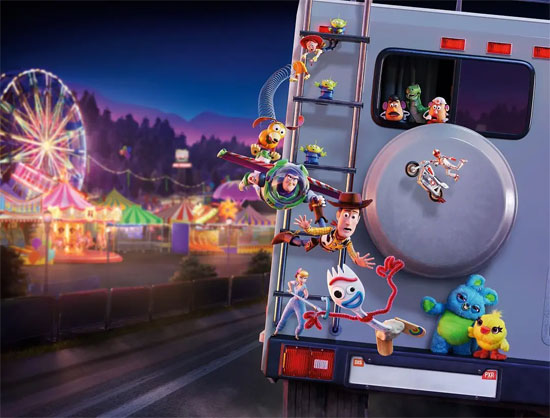
It symbolizes the broader world and more diverse experiences of the Toy Story franchise, signifying a future brimming with infinite possibilities.
Please specify:Anime Phone Cases » Toy Story 4 玩具總動員4 2019 Film Review: Embrace “Freedom,” where the future holds infinite possibilities.